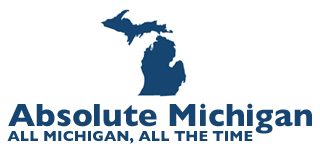Photo Friday: Heronry by Sentrawoods.
The photo featured today shows a cluster of nests at a Michigan heronry and was shot by Sentrawoods.
Sentrawoods. adds:
This location was shown to me by my local flickr friend gerrybuckel. If you enlarge this you’ll see seven maybe eight heron’s nesting. I plan on getting much closer in the days to come.
The Department of Natural Resources tells us:
Sometimes confused with the sandhill crane; the heron is smaller and flies with its neck folded back, while cranes fly with their neck extended. Great blue herons are commonly seen in small suburban wetlands (cranes are generally less tolerant of close presence). Herons feed on fish, frogs, and other small animals, captured by a quick jab of the beak. They nest in colonies, usually building their stick platform nests in trees in lowland hardwood swamps. In recent years many rookeries have been displaced by shoreline development or timber cutting. Every attempt must be made to preserve known nesting sites if these beautiful birds are to remain common in Michigan’s wetlands.
This photo is part of his Nature & Woods set (slideshow). His other sets include Holloway Reservoir, Mushrooms & Fungi, Technical & Engineering and Animals & Things. Here’s his Flickriver.
For more pictures of blue herons check out the Flickr group Citizen Science: Great Blue Heron.

